| Upper Green and the
Surrounding Area One of the best known parts of
modern Tettenhall is Upper Green, with its delightful grass
and trees, memorial clock, lovely old shops, and adjacent
paddling pool. In the eighteenth century it was an area of
sparsely populated open marshland known as Marsh Green, with
Marsh Pool, which is now the paddling pool. Nearby on the
ridge stood an area of woodland, an outlier of Kinver
Forest, that extended though Compton and Wightwick into the
area now called Tettenhall Wood. It was originally a Royal
forest, used by the King and the aristocracy for deer
hunting. As a result, the local population had to abide by
the strict forest laws which ensured that they could do
nothing that would interfere with the King's sporting
pleasure. |
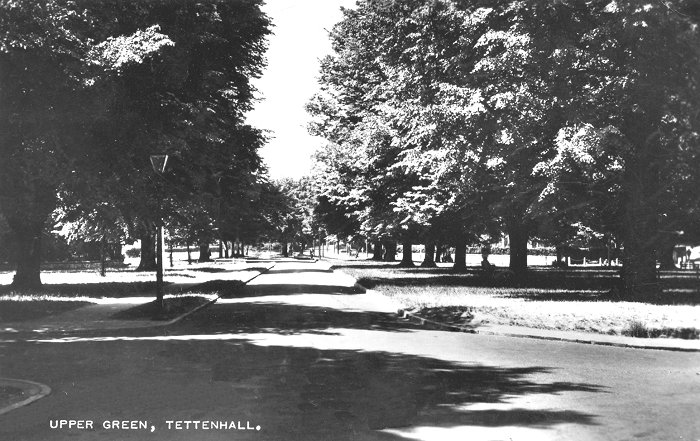

A view of Upper Green from Stockwell Road.
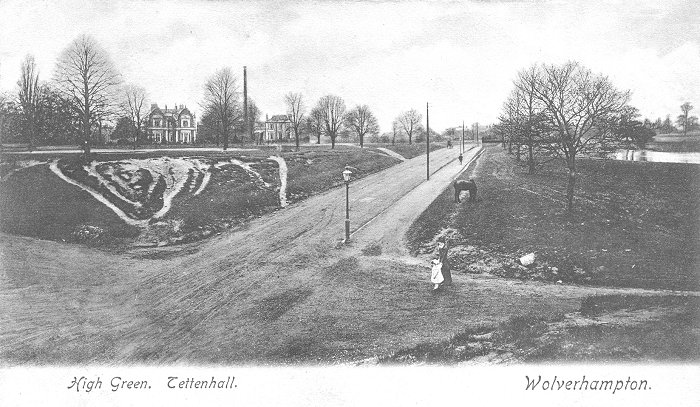
An earlier view showing two of the
village's grand houses, the Manor House on the left, and
the Oaklands on the right, both occupied by successful
industrialists. In the late nineteenth century and early
twentieth century the Manor House was occupied by Thomas
Parker and his family. He ran Elwell-Parker Limited,
became involved with E.C.C., then ran Thomas Parker
Limited, later becoming a director of the Metropolitan
Railway Company. For many years the Oaklands was
occupied by Edward Lisle and his family. He ran the Star
Engineering Company. |
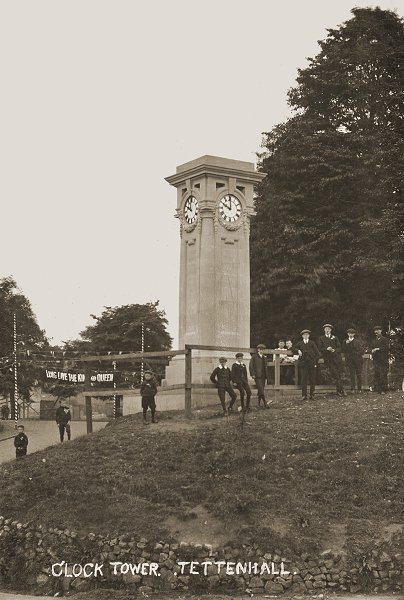 |
A well known local landmark on
Upper Green is the coronation memorial clock tower, built to
commemorate the coronation of King George V.
The photograph was taken at the
unveiling ceremony on 22nd June, 1911. The tower, containing
a clock made by John Smith & Sons of Derby, was designed by
Frederick T. Beck of Darlington Street, Wolverhampton, and
built by Mr. Cave of Wolverhampton.
The inscriptions on the tower are
as follows:
To commemorate the Coronation of
His Majesty King George V, Mr. and Mrs. Edward Swindley of
the Cedars Tettenhall presented this clock to the Urban
District of Tettenhall 22nd June 1911.
And on the four sides:
I labour here with all my might to tell the hours by day and
night.
For every hour that strikes there
is a joy.
For every hour that comes there is
a hope.
For every hour that passes there is
a record. |


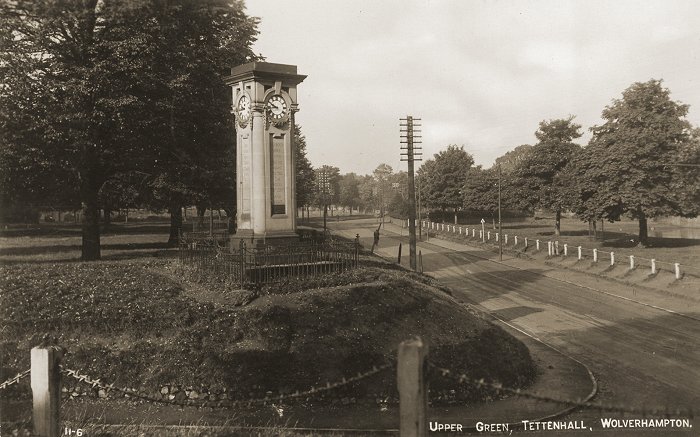
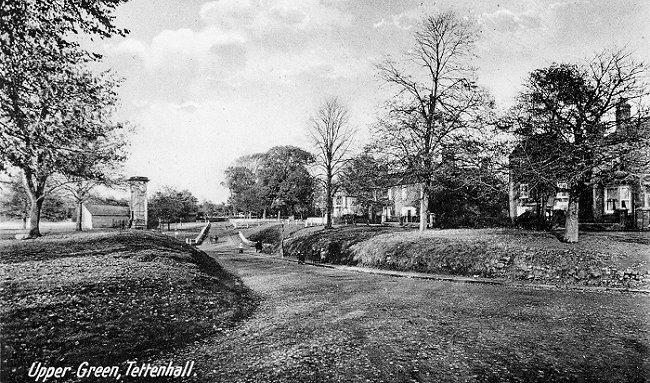
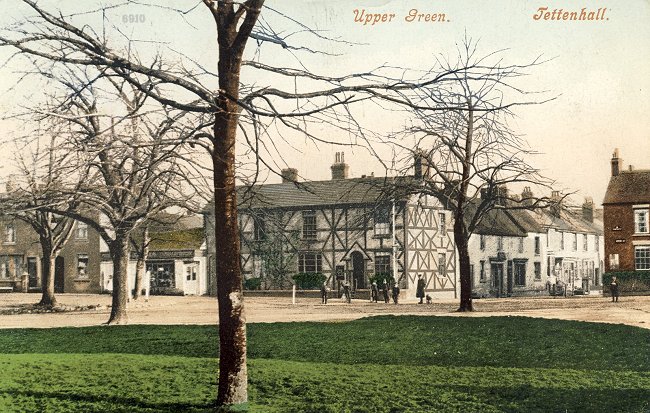
The junction of Upper Green and
Upper Street showing the row of houses that have now
been converted into cafés
and shops. |
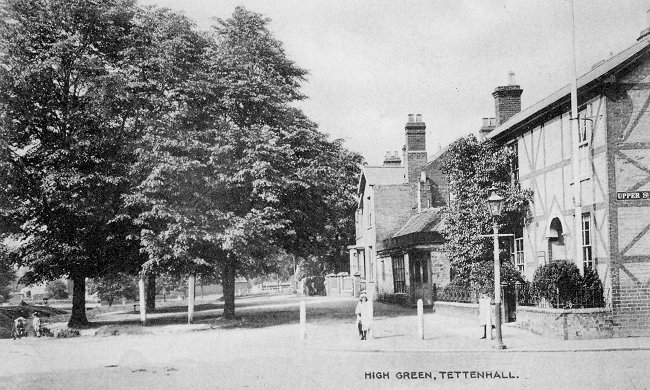
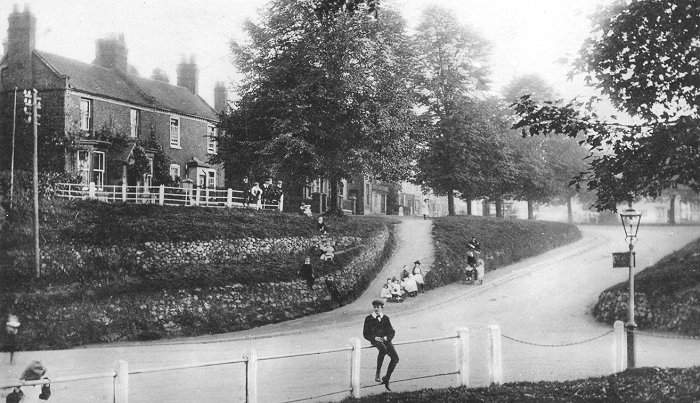
Looking towards Upper Green from
The Rock in about 1900. The two fine early nineteenth
century houses on the left are now listed buildings. |
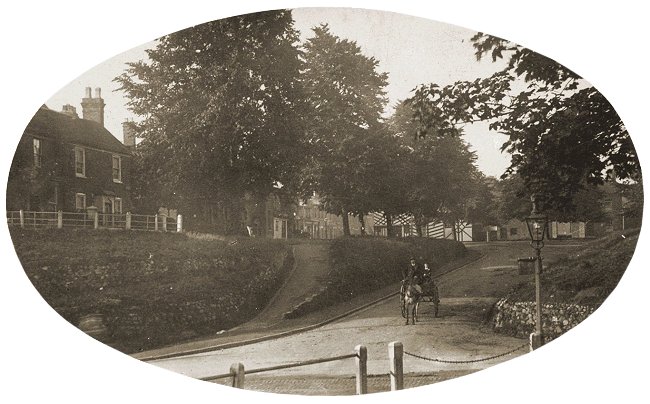
Another view from the same spot.
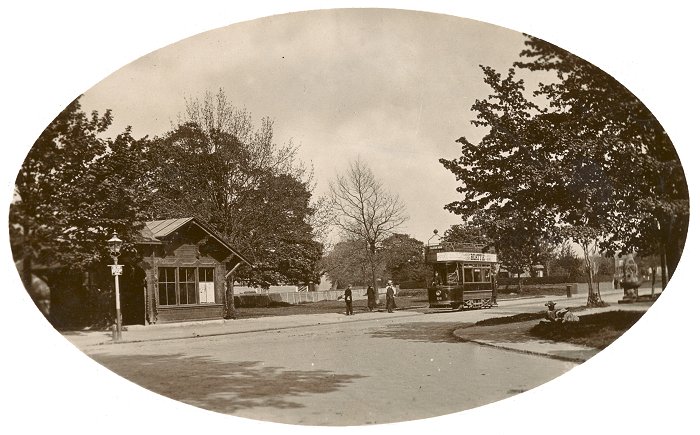
Wolverhampton trams were once a common sight in Wergs
Road alongside Upper Green. The tram service from
Wolverhampton opened on 13th September 1902, and was
well used. The Swiss-chalet shelter on the left came
from the 1902 Wolverhampton Art and Industrial
Exhibition, and remained in service until the early
1970s, by which time it had started to badly
deteriorate. |
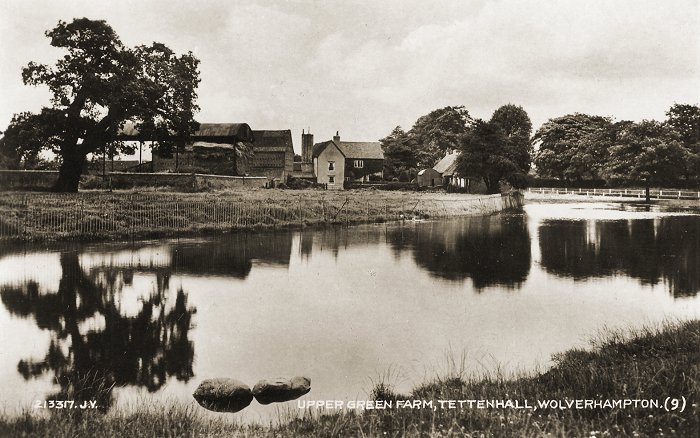
A view looking across the village pond to the sixteenth
century farmhouse in Stockwell Road. In the 1930s the
pond became the paddling pool, which still survives
today. |
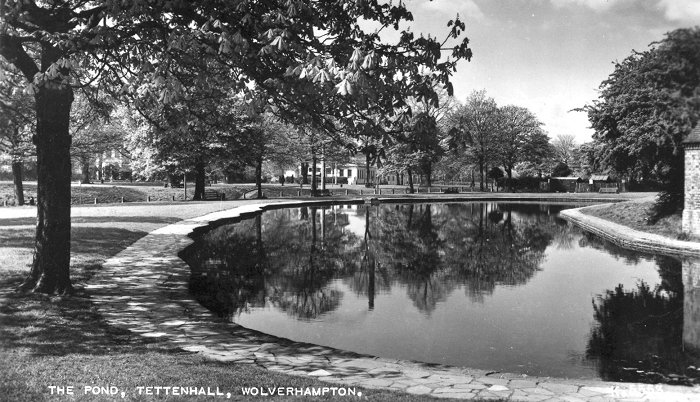
The village pond was converted to
the paddling pool during the last few months of 1933.
The Graham family of the Express & Star paid for the
conversion. Some of the grand houses alongside Upper
Green can be seen through the trees on the left. |
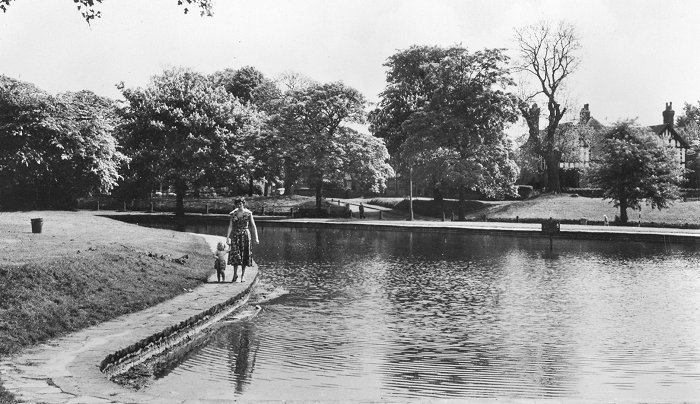
Another view of the paddling pool, looking in
the opposite direction towards Clifton Road.
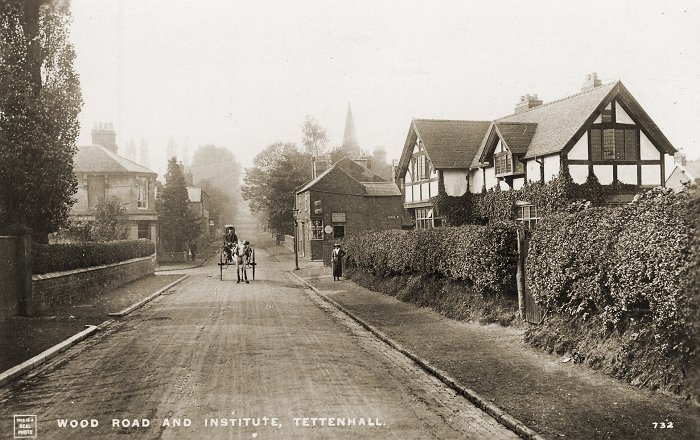
Looking from the southern end of
Wood Road, into Mount Road. On the far right is the
Tettenhall Institute, and behind is the spire of
Tettenhall Wood United Reformed Church. Tettenhall
Institute, originally Tettenhall Working Mens Institute,
opened in 1893. |
|
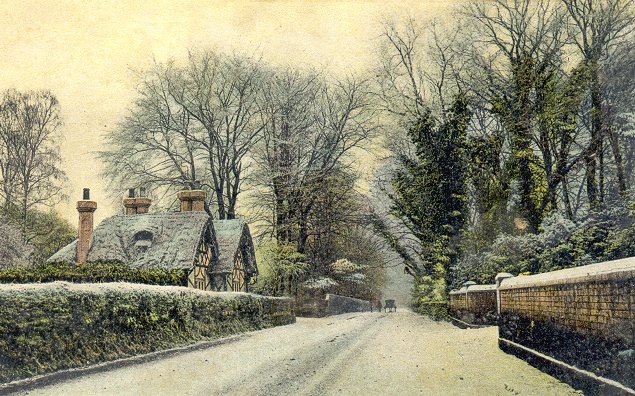
A view of Wood Road looking
northwards towards Tettenhall village. |
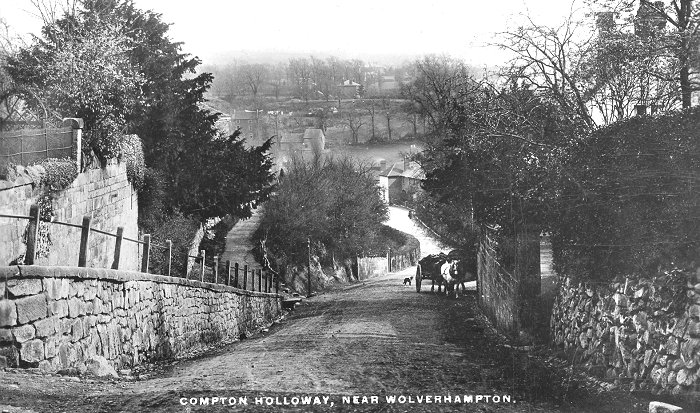
The view down Compton Holloway looking towards Compton,
Bradmore, and Merridale, much of which was still open
countryside. The steep ascent up Compton Hill must have
been extremely difficult for fully-laden horse-drawn carts and
carriages, like the one in the photograph. |
|
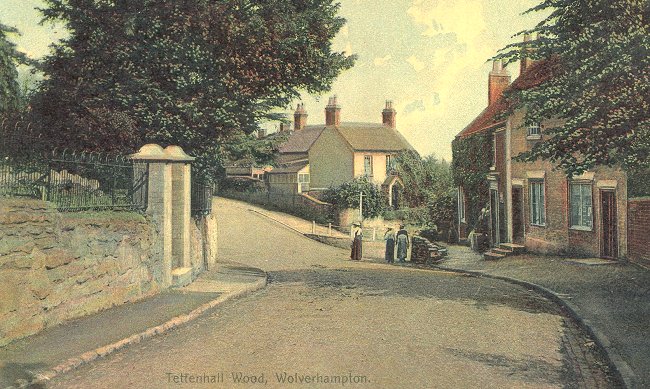
The junction of Church Road, Ormes
Lane, and Compton Holloway. |
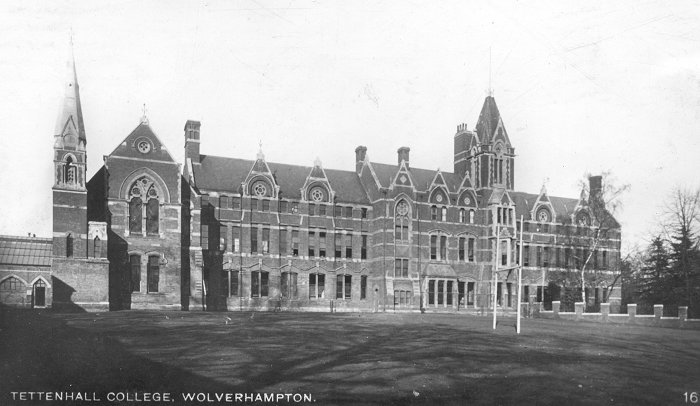
The school began in a small way,
in a pleasant Georgian house belonging to Francis
Holyoake, with 6.5 acres of land, and several
outbuildings including a fine barn, which was converted
into a classroom. Building work on the main school
(shown above) began in March 1865 and lasted until March
1867. The building, which cost £16,769.14s.5d.,
officially opened in April 1867. |
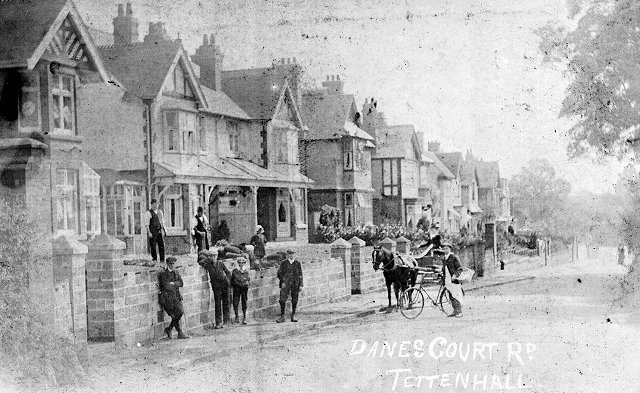
Danescourt Road led to a long-gone
grand house called Danes Court, built by local
industrialist Edward Perry who ran Jeddo Works in Paul
Street, later replaced by Sunbeamland. He was mayor of
Wolverhampton in 1855 and 1856, a founder of
Wolverhampton Chamber of Commerce, and its president
from 1856 until 1864. Perry built the house just before
his death in 1871, but sadly didn’t live long enough to
settle-in. When the house had been completed, he was
taken ill and soon died. The gate lodge to the house
still survives and is now locally listed. |
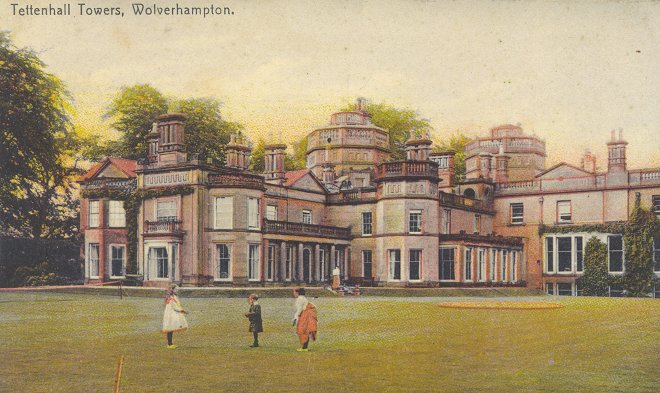
Tettenhall Towers, built around
1770, much altered in 1820, and greatly extended in
1860, is remembered as the home of the Thorneycroft
family, and particularly one family member, the
flamboyant Colonel Thomas Thorneycroft. The house
incorporates many of the colonel's innovations and
inventions including his ventilation and heating system,
water closets, and a theatre with a sprung floor, and a
stage with an impressive waterfall. The building is now
part of Tettenhall College. |
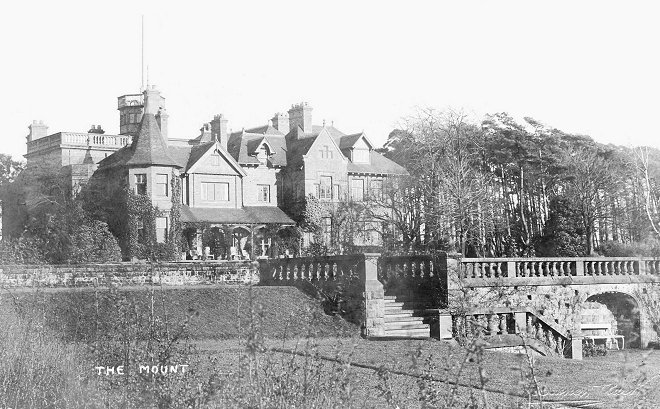
One of Tettenhall's grandest
houses, The Mount, in Mount Road, was built in 1865 for
paint and varnish manufacturer Charles Benjamin Mander,
and occupied by family members until 1952 when it was
sold and became a hotel. |
 |
|
 |
Return to
the contents |
|
Proceed to
Lower Green |
|